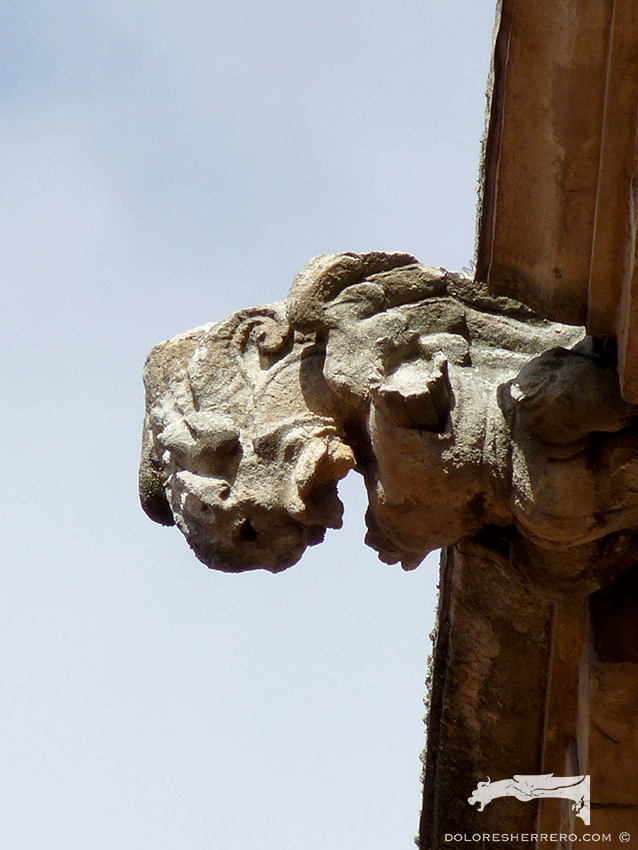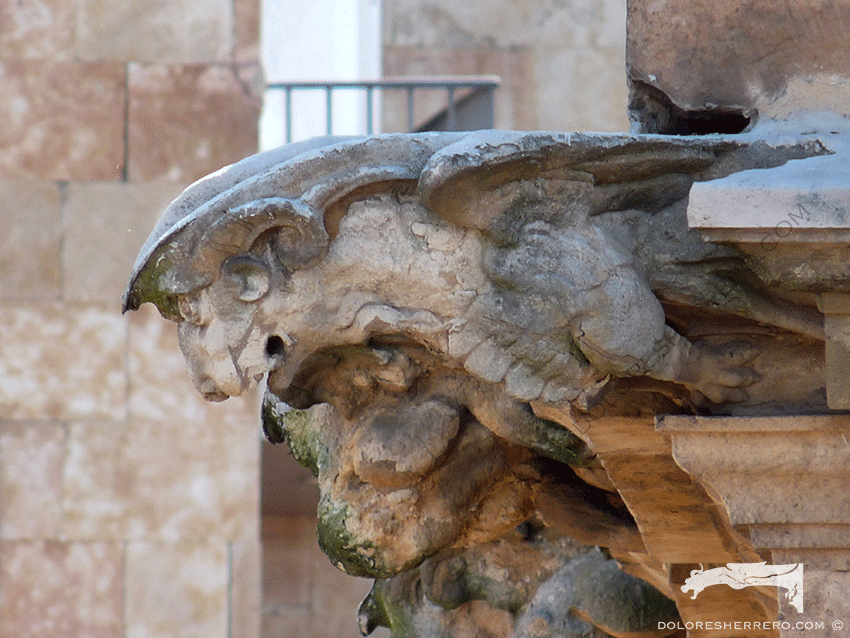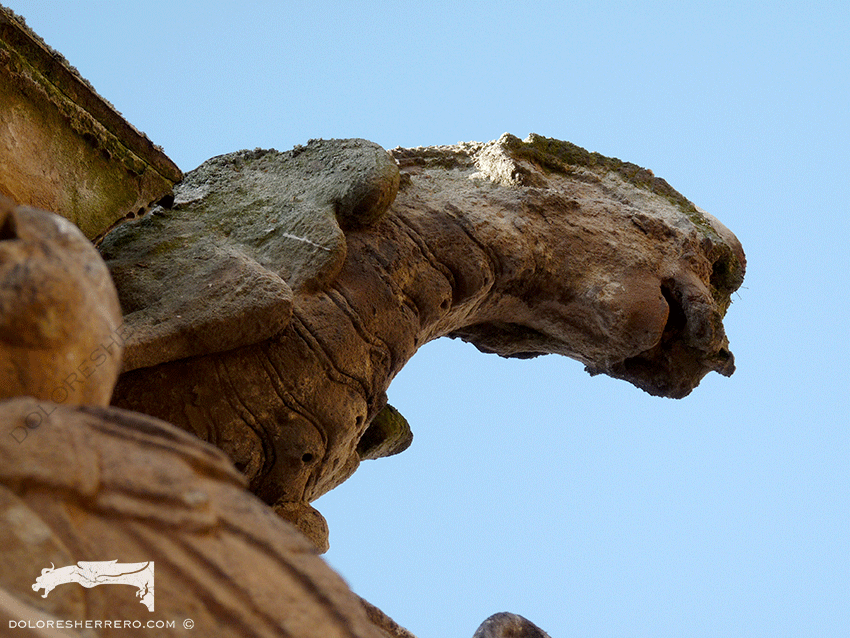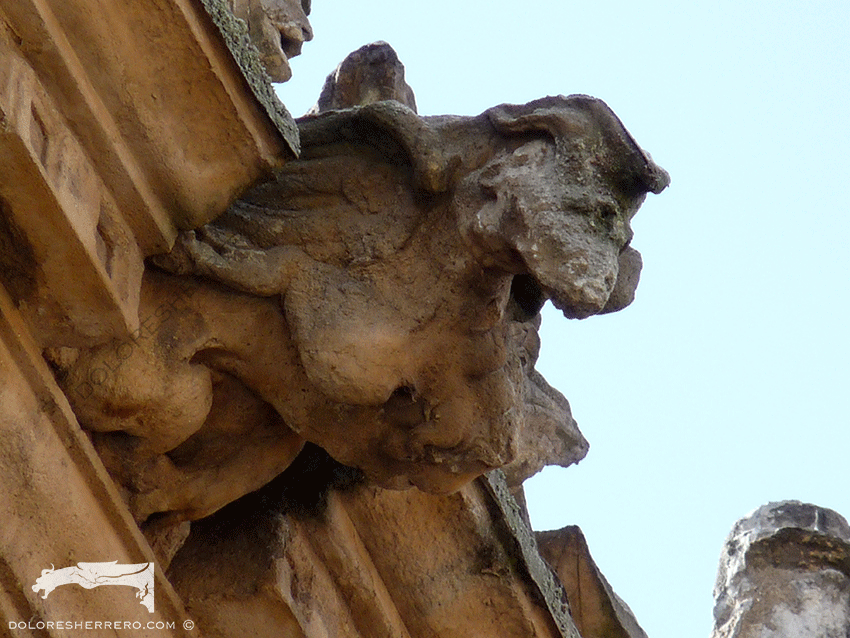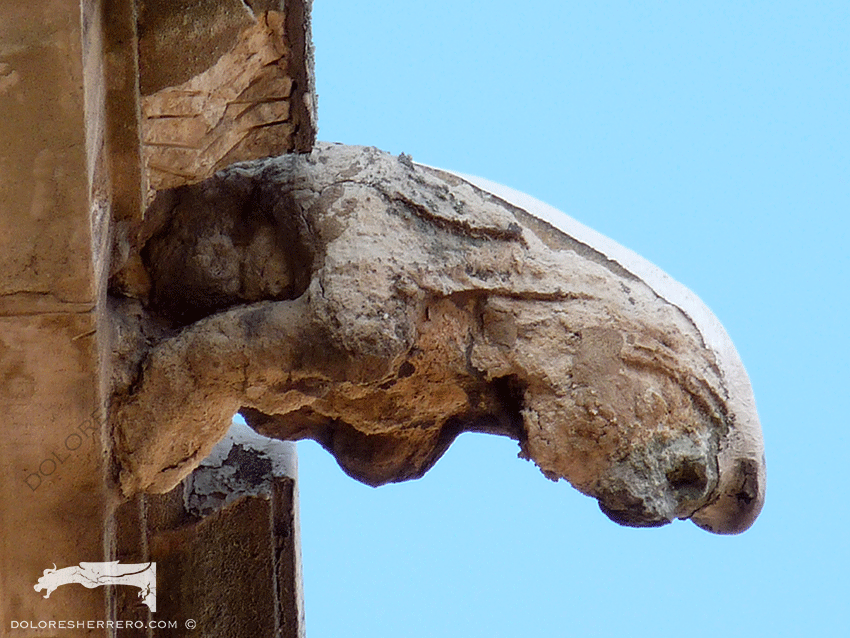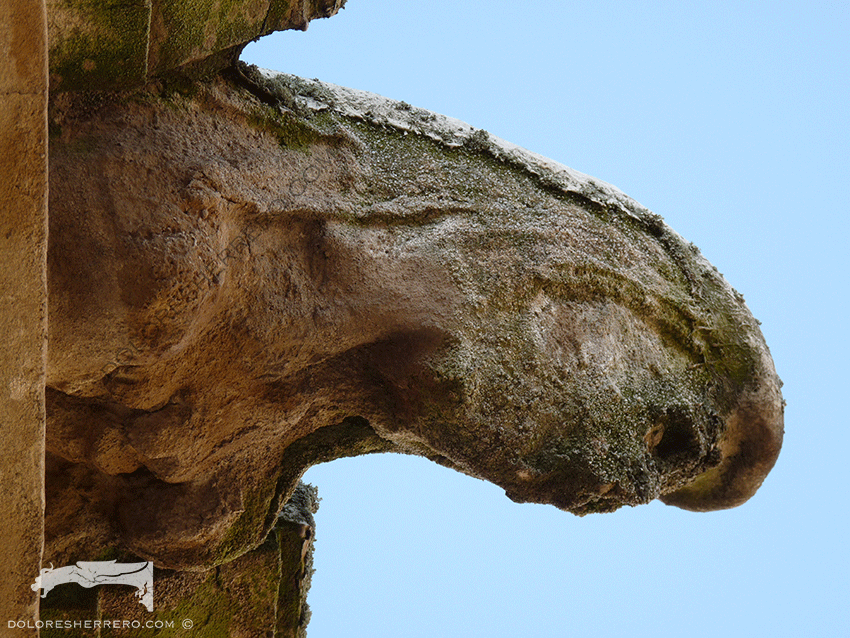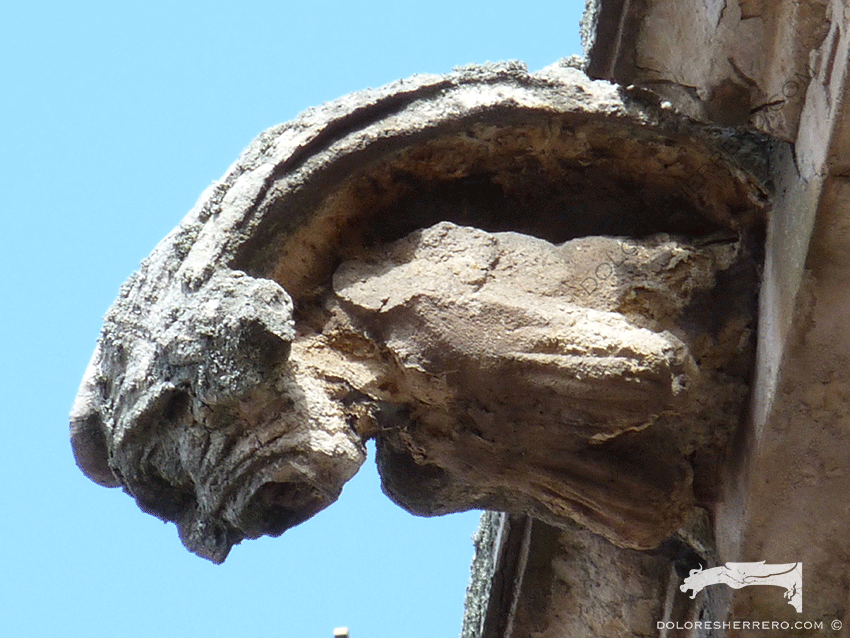The Palace of Monterrey (Salamanca, Spain) is a magnificent building built by the third Count of Monterrey and Viceroy of Naples, Alonso de Acevedo y Zúñiga, in 1539 “in accordance with a design drawn and signed by Father Fray Min. de Santiago and by Ro. Gil”. It is possible that both also drew up the plans for the Palace of Fonseca with the participation of carvers such as Ibarra and Aguirre. Only one wing of the four planned was built, with two large corner towers. It is currently owned by the House of Alba.
The entire exterior of the palace is decorated with Renaissance grotesques, with a variety of monsters, animals, hybrid creatures and fabulous beings. Above all, the figures of the lion and the dragon predominate as the guardian animals of the house. The lion is also a symbol of power and strength. Alongside this exuberant decoration and the beautiful cresting, we see the peculiar gargoyles of the two towers.
The Unique Iconography of the Monterrey Palace Gargoyles: A Haunting Vision
The gargoyles are generally very deteriorated, many of them broken with built-in metal pipes for drainage.
Nevertheless, there are some very curious and noteworthy gargoyles remaining on the towers. Although some of them are very worn and their typology cannot be clearly appreciated, what remains of them shows their originality and strangeness. Because of this wear, some of them seem to be more ornamental than functional.
There are quite a few demonic figures. There are winged demons with dragon-like bodies and horns. There is also a ram’s head, a figure also related to the goat and its identification with the devil and with lust. In other gargoyles the deformity, the grotesque and even disturbing element is more accentuated. Deterioration makes it impossible to distinguish certain parts of the bodies. They are soft and even unpleasant in appearance, with a surrealist touch; somewhat caricatured figures, a histrionic and buffoonish image of the devil, as is typical of this period. Two of them have women’s breasts, which iconography identifies evil with women, the devil sometimes appearing with breasts hanging down, which is very frequent from the 15th century onwards, as we have already seen in one of the entries dedicated to the devil. We have several examples in Spain; for example, in one of the gargoyles of the Cathedral of Plasencia, or in many of the demons of the dome of Burgos Cathedral; they are truly impressive gargoyles.
We move on to another type of figures which are also very peculiar. It is difficult to specify which figures we are dealing with due to erosion. They are anthropomorphic, deformed and disturbing creatures. They have a protrusion on their heads, like a topknot that seems to unfurl a cloak that covers their heads and the back of their heads, which element curiously appears on a gargoyle in Lichfield Cathedral (England), a Gothic cathedral built between the 12th and 14th centuries.
In the less deteriorated gargoyles, we can better see the features and details that define them and make them so unique. In one of them we see a woman, wearing a headdress, with a hideous, aged face, sagging breasts and a shuddering, highly expressive countenance. The skin is furrowed and wrinkled. It could be a representation of a witch. The previous, extremely worn gargoyles and wearing such clothing could also be witches or demon-women. These are undoubtedly highly particular and enigmatic images.
The last gargoyle is the figure of a woman, in this case a young woman, with a calmer countenance, showing a suggestive and seductive pose, with her right arm raised to her head and her breasts bare. As we can see, most of the figures have sexual connotations, showing their breasts or, as here, with a provocative gesture.

The gargoyles of the Palace of Monterrey are sinister representations with strong links to the devil, thus belying the idea that such imagery appears almost exclusively in religious buildings with a preventive and intimidating intention aimed at the faithful, which further emphasises its uniqueness within the context of civil architecture. Although the gargoyles are more crudely carved and have short, wide bodies, they are unique, enigmatic, astonishing figures with an expressiveness that makes them unusual and tremendously attractive.
Bibliography consulted
FERNÁNDEZ ARENAS, J., Martín de Santiago y la arquitectura del Protorrenacimiento salmantino, Resumen de la tesis presentada para aspirar al grado de Doctor en Filosofía y Letras por José Fernández Arenas, Barcelona, Universidad de Barcelona. Secretariado de Publicaciones. Intercambio Científico y Extensión Universitaria, 1978.

Doctor of Art History and researcher specializing in the study of gargoyles.
I am Dolores Herrero Ferrio, and my thesis, “An Approach to the Study of Gargoyles of Gothic Cathedrals in Castilla and León”, is dedicated to the study of these fascinating figures.
If you like gargoyles and art history, you will also enjoy my book, “The Gargoyle and Its Iconography,” a book I have written with great care for those interested in the world of gargoyles.
I have created my own Encyclopedia of Gargoyles, a Gargopedia to share with you, where you will discover all the secrets and wonders of these enigmatic sculptures.
I hope you enjoy this Gargopedia as much as I have enjoyed creating it, and remember that each gargoyle has a story to tell, and here you will discover them all.
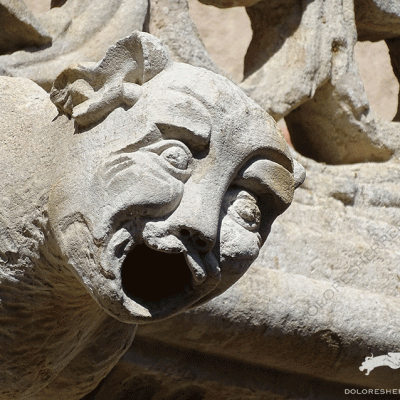 The Emblematic Gargoyles of Salamanca’s Casa de las Conchas
The Emblematic Gargoyles of Salamanca’s Casa de las Conchas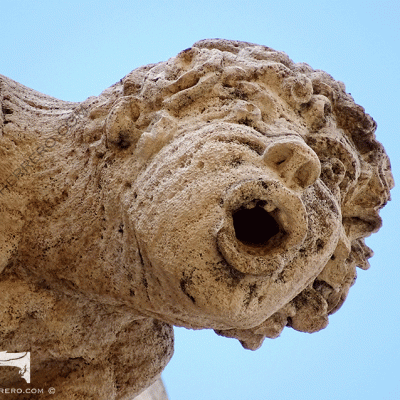 The Imposing Gargoyles of Valencia’s Lonja: Architectural Splendor and Symbolism
The Imposing Gargoyles of Valencia’s Lonja: Architectural Splendor and Symbolism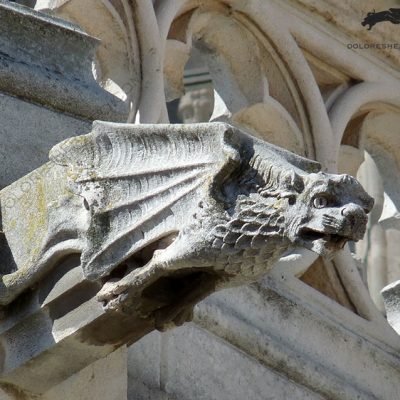 Imposing Gargoyles at the Head of Palencia Cathedral
Imposing Gargoyles at the Head of Palencia Cathedral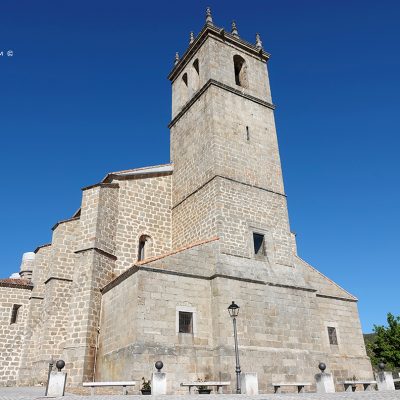 The Gargoyles of Robledo de Chavela’s Church, Spain: Stone Guardians of Madrid’s Skies
The Gargoyles of Robledo de Chavela’s Church, Spain: Stone Guardians of Madrid’s Skies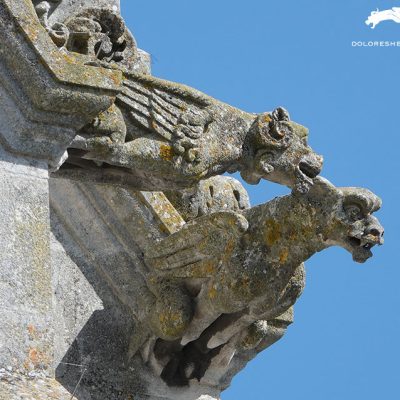 The Gargoyles of the Blois Cathedral
The Gargoyles of the Blois Cathedral


